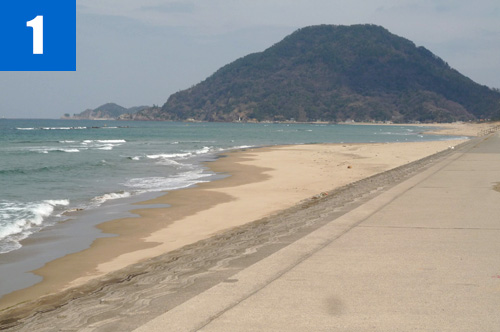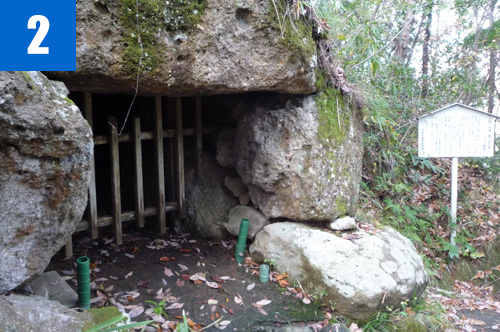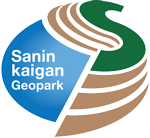The mountain is comprised of Arakane pyroclastic rocks and Shichiyama formation of sandstone and mudstone of Tottori Group of Miocene of Neogene Tertiary covered by the lava flow of Pliocene. This mountain has been closely related to people living in this area since olden times. The mountain appears in the legend of Empress Jingu, and the stone quarried from this mountain has been used to build stone chambers in tumuli in this area.
(1)Mt. Shichi
This is a mountain consisting of the Miocene (Neogene Tertiary) Arakane pyroclastic rocks and the Shichiyama formation consisting of sandstone and mudstone overlain by the Pliocene lava flow.
(2)Obata Burial Mound No. 1 (Anakannon)
Obata Burial Mound No.1 is a tumulus of the Obata Ancient Tumuli. The tumulus is also called "Ana-kannon-kofun" ("Hole Kannon Tumulus"), since a statue of Kannon used to be placed in the tumulus. The tumulus was built in the late Kofun Period. The stone chamber is 11.2 meters in length. The height of the burial chamber is as high as 3.5 meters above the floor.
(3)Otani Kaigan Coast
The pebbles of this beach consist of tuff breccia, tuff, sandstone, mudstone, andesite and rhyolite rocks fallen from Mt. Shichi. You can also find autobrecciated lava.
(4)Iwaya Jizo
A statue of Jizo is placed in a hole formed by the salt weathering of a tuff. This Jizo appears as “Kussekison" ("the stone Jizo in the cave") in the book titled "Inaba Kakei Mudaaruki" written in the late Edo Period.





